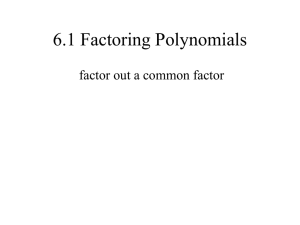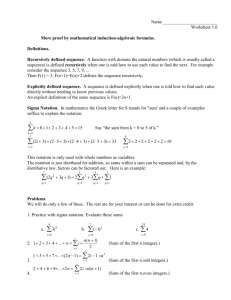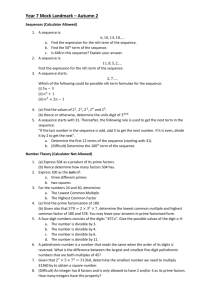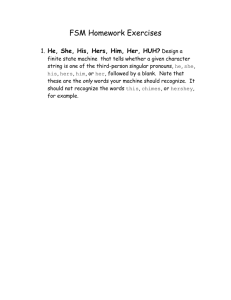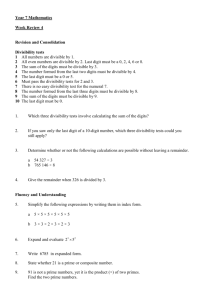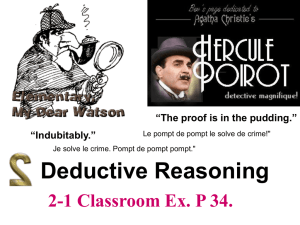Tuesday
advertisement
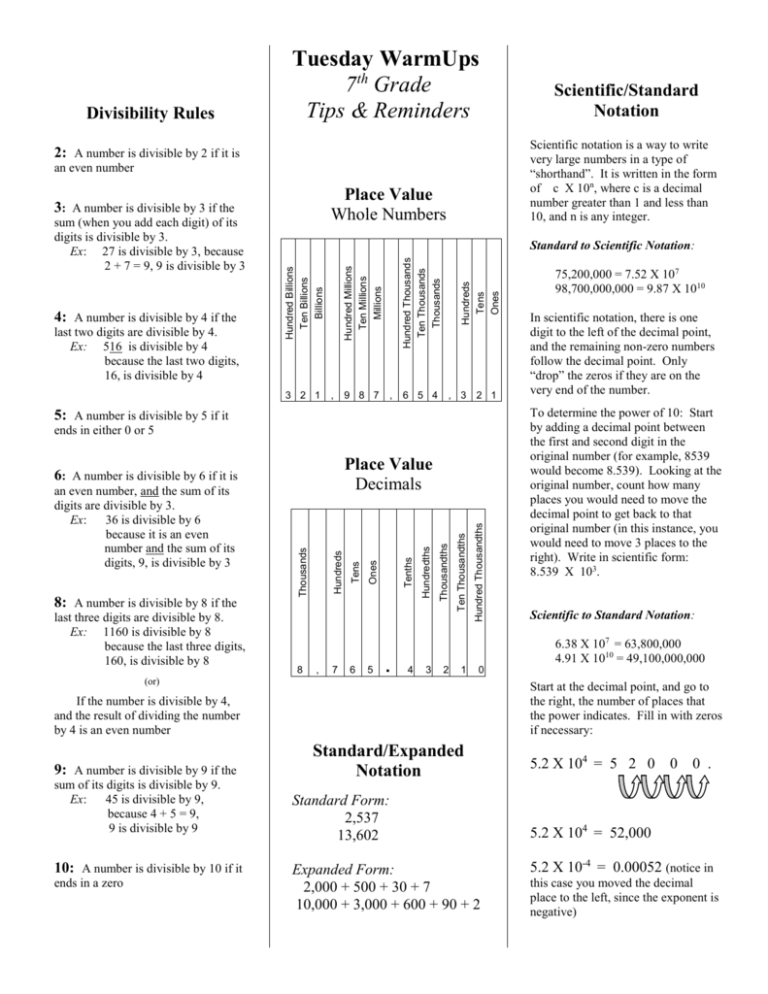
Divisibility Rules Tuesday WarmUps 7th Grade Tips & Reminders Scientific/Standard Notation Place Value Whole Numbers Scientific notation is a way to write very large numbers in a type of “shorthand”. It is written in the form of c X 10n, where c is a decimal number greater than 1 and less than 10, and n is any integer. 2: A number is divisible by 2 if it is an even number 3: A number is divisible by 3 if the 3 2 1 , 9 8 7 , Hundreds Tens Ones Hundred Thousands Ten Thousands Thousands last two digits are divisible by 4. Ex: 516 is divisible by 4 because the last two digits, 16, is divisible by 4 Hundred Millions Ten Millions Millions 4: A number is divisible by 4 if the Standard to Scientific Notation: Hundred Billions Ten Billions Billions sum (when you add each digit) of its digits is divisible by 3. Ex: 27 is divisible by 3, because 2 + 7 = 9, 9 is divisible by 3 6 5 4 2, 3 2 1 5: A number is divisible by 5 if it ends in either 0 or 5 8 7 6 5 . Thousandths Ten Thousandths Tenths Ones Hundreds , Hundred Thousandths last three digits are divisible by 8. Ex: 1160 is divisible by 8 because the last three digits, 160, is divisible by 8 Hundredths 8: A number is divisible by 8 if the Thousands an even number, and the sum of its digits are divisible by 3. Ex: 36 is divisible by 6 because it is an even number and the sum of its digits, 9, is divisible by 3 Tens Place Value Decimals 6: A number is divisible by 6 if it is 4 3 2 1 10: A number is divisible by 10 if it ends in a zero To determine the power of 10: Start by adding a decimal point between the first and second digit in the original number (for example, 8539 would become 8.539). Looking at the original number, count how many places you would need to move the decimal point to get back to that original number (in this instance, you would need to move 3 places to the right). Write in scientific form: 8.539 X 103. Scientific to Standard Notation: 0 Start at the decimal point, and go to the right, the number of places that the power indicates. Fill in with zeros if necessary: If the number is divisible by 4, and the result of dividing the number by 4 is an even number sum of its digits is divisible by 9. Ex: 45 is divisible by 9, because 4 + 5 = 9, 9 is divisible by 9 In scientific notation, there is one digit to the left of the decimal point, and the remaining non-zero numbers follow the decimal point. Only “drop” the zeros if they are on the very end of the number. 6.38 X 107 = 63,800,000 4.91 X 1010 = 49,100,000,000 (or) 9: A number is divisible by 9 if the 75,200,000 = 7.52 X 107 98,700,000,000 = 9.87 X 1010 Standard/Expanded Notation Standard Form: 2,537 13,602 Expanded Form: 2,000 + 500 + 30 + 7 10,000 + 3,000 + 600 + 90 + 2 5.2 X 104 = 5 2 0 0 0 . 5.2 X 104 = 52,000 5.2 X 10-4 = 0.00052 (notice in this case you moved the decimal place to the left, since the exponent is negative) Writing Fractions in Lowest Terms Whenever the numerator and denominator of a fraction can be divided by the same non-zero whole number, it can be “reduced” or written in lower terms. When the numerator and denominator can no longer be divided by the same nonzero whole number, it is said to be written in lowest terms. EX: Remember that division is the multiplication of the inverse. * Change the operation to multiplication * Invert (flip) the numerator and denominator of the second fraction. * Multiply the denominators. 10 ÷ 5 = 2 15 ÷ 5 3 There is not a whole number that can be evenly divided into 2 and 3, * Multiply the numerators. * Multiply the denominators. * Write the product in lowest terms (reduce) if necessary. 2 3 3 7 63 2 = 21 3 7 * You can also simplify before multiplying: 1 2 3 2 • = 3 7 7 1 * If multiplying a whole number by a fraction, make the whole number a fraction by placing it over 1. 3 9 3 27 6 = • = = 3 7 1 7 7 7 Ex: 14 9 = 1 5 9 You can also simplify in division problems, after you change the operation to multiplication and invert the second fraction: * 1 3 6 ÷ = 8 7 24.70 (annexed zero) + 48.92 73.62 Ex: * If dividing a whole number by a fraction, or a fraction by a whole number, make the whole number a fraction by placing it over 1. Then follow the above steps. 3 7 7 • = 8 6 16 2 24.7 + 48.92 = 1 1 2 7 • = 3 3 = 2 3 6 • = 3 7 21 • * Line up the decimal points. * Annex (add) zeros if necessary * Add or subtract as you would with whole numbers * Remember to bring down the decimal point in the exact same spot into the answer. * Write the product in lowest terms (reduce) if necessary. 2 is in lowest terms. 3 Multiplying Fractions 9 Adding/Subtracting Decimals * Multiply the numerators. 10 15 Both can be divided evenly by “5”. so Dividing Fractions 59.45 - 17.3 = 59.45 - 17.30 (annexed zero) 42.15
